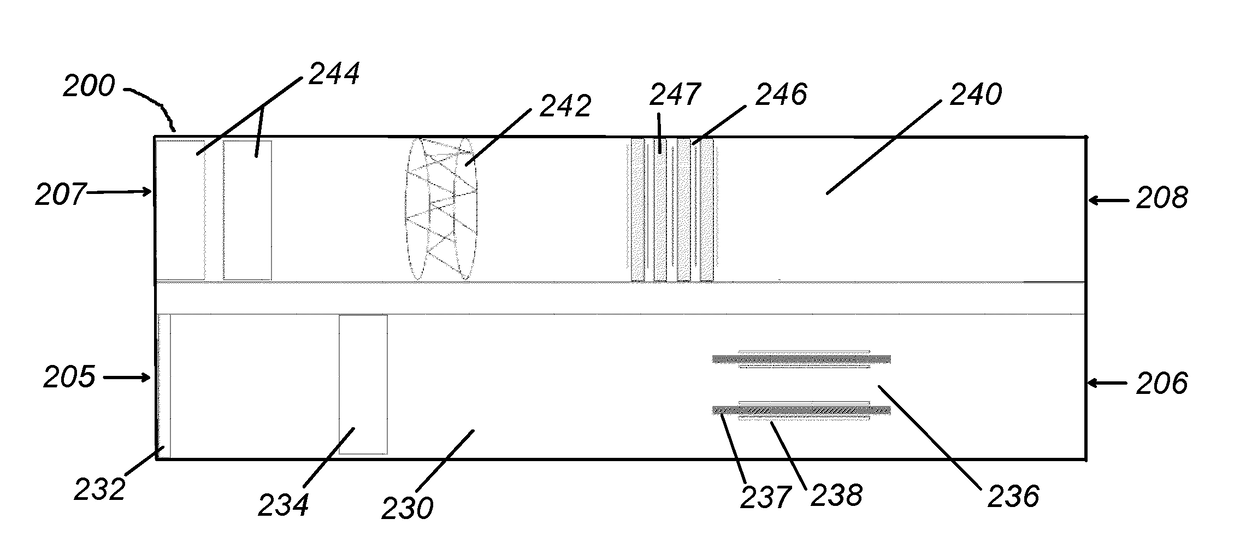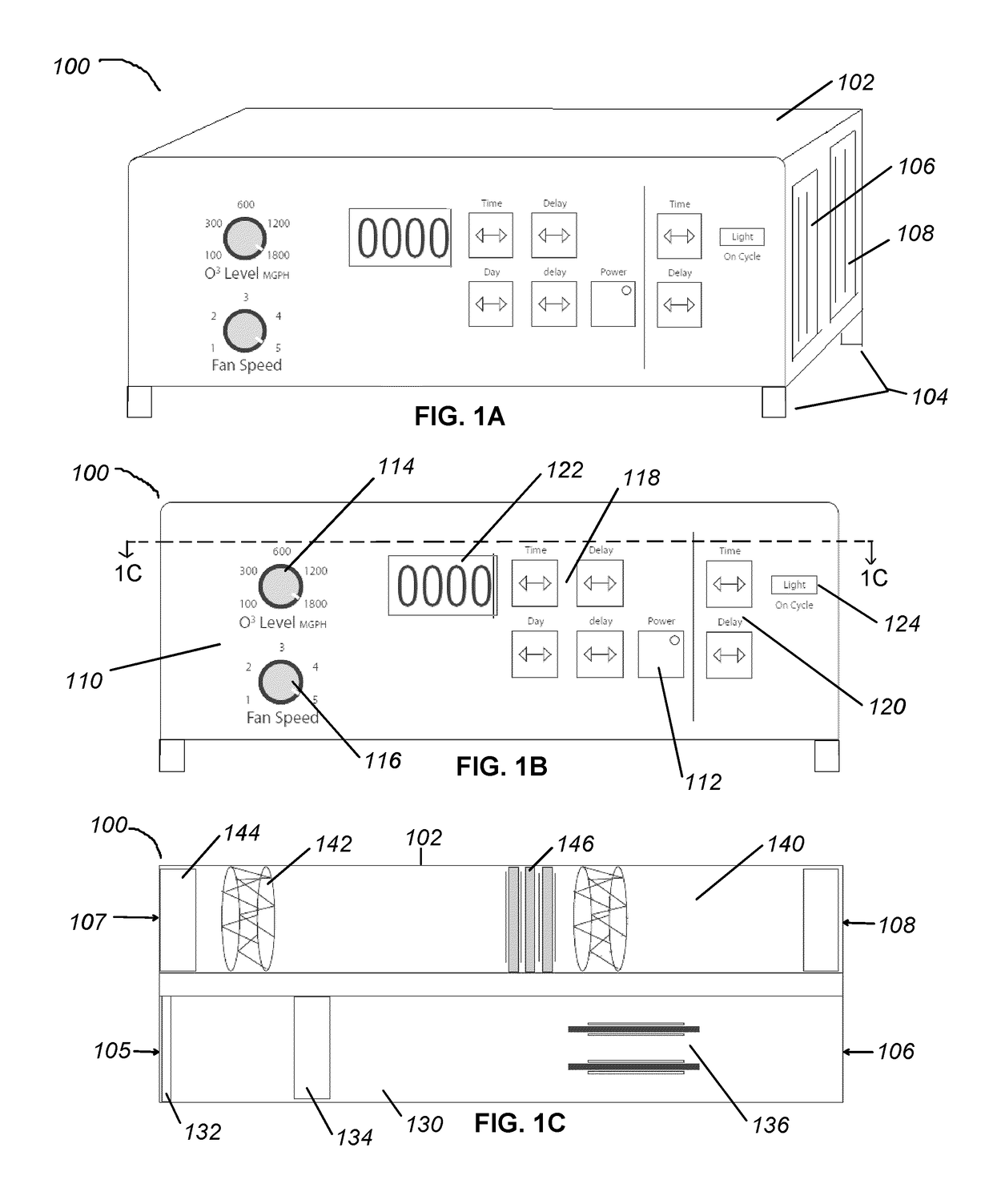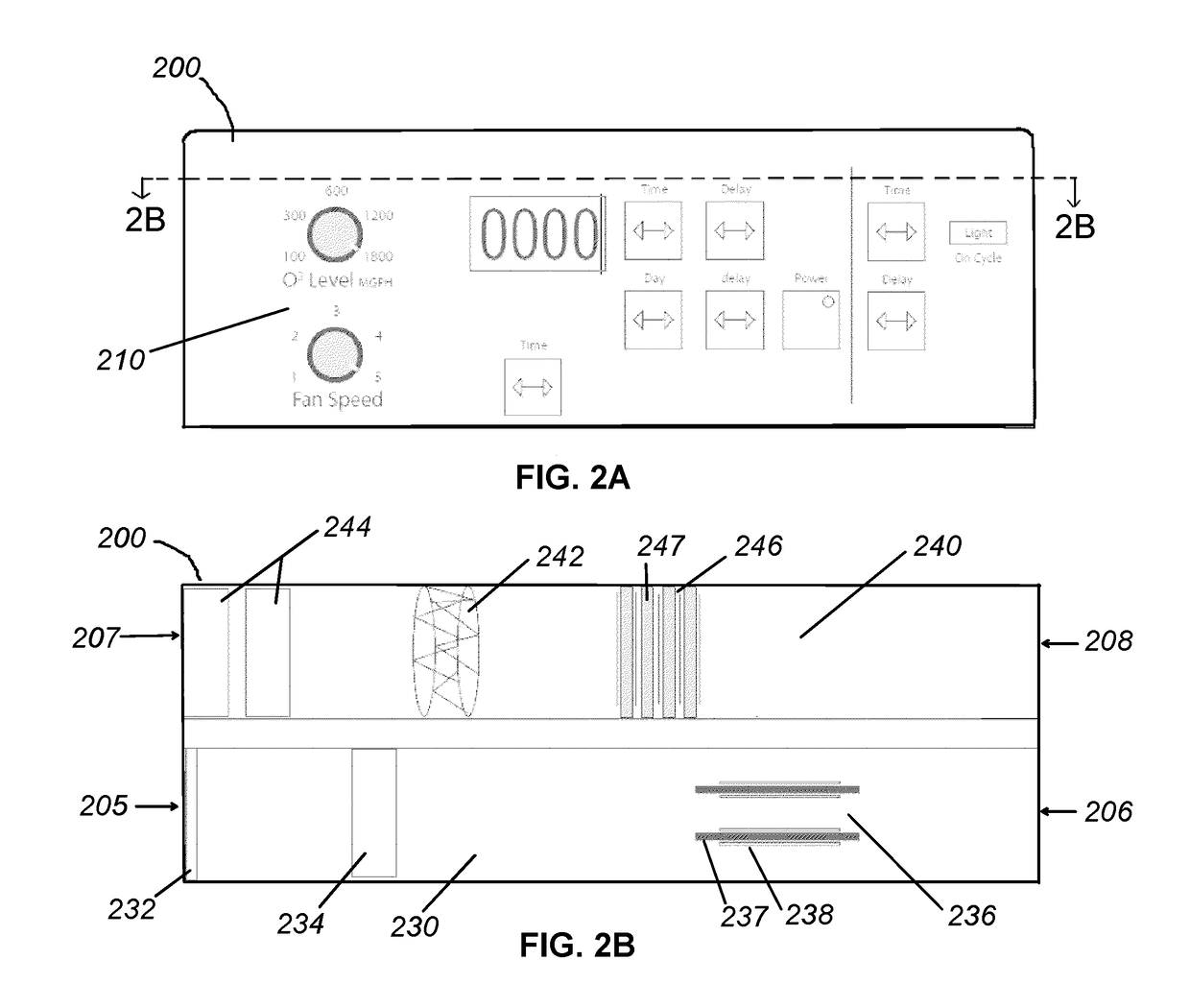Apparatus and methods for ozone generation and degradation
a technology of ozone and apparatus, applied in the field of decontamination systems and methods, can solve the problems of inaccurate test, harmful and/or disruptive presence of such contaminants, and ineffective testing, etc., and achieve the effects of convenient, effective, and relatively low cos
- Summary
- Abstract
- Description
- Claims
- Application Information
AI Technical Summary
Benefits of technology
Problems solved by technology
Method used
Image
Examples
experiment 1
[0070]In Experiment 1, an 1800 mg / hour ozone generator was placed in a 5.5 cubic feet cell culture. The ozone level within the chamber was monitored using a calibrated ozone analyzer. Ozone measurements were captured every 10 seconds. The experimental results, as represented by ozone level over time, are provided in the line graph 500 of FIG. 5A. In test #1, represented by line 510, the ozone generator was run for 80 minutes and achieved a peak ozone concentration within the cell culture chamber of approximately 325 ppm. After the ozone generator was turned off, the ozone was left to break down naturally within the enclosed cell culture chamber. It took approximately 28 hours for the ozone to breakdown to 0.01 ppm ozone.
[0071]In tests #2 and #3, represented by lines 520 and 530, respectively, both the ozone generator and an ozone degrader were present in the cell culture chamber. The ozone degrader was formed of three activated carbon filters. With the ozone degrader present, the oz...
experiment 2
[0073]In Experiment 2, the effect of ozone on bacteriophage T1 was studied. In the experiment, 2.5 μL of purified bacteriophage T1 was spotted in four quadrants of two LB agar plates—a test plate 610 and a control plate 620, shown in FIG. 6. The bacteriophage concentrations on each of the two plates were (clockwise from the spot in the upper right quadrant): 109 pfu / mL, 108 pfu / mL, 107 pfu / mL, and 106 pfu / mL.
[0074]The test plate 610 was placed in an incubator chamber containing both an ozone generator and an ozone degrader. The ozone generator included two ceramic plates surrounded substantially by a silver-coated metal mesh. The ozone generator was activated and the test plate 610 was treated with ozone for 4 hours. The ozone generator was then turned off, and the ozone degrader, formed of activated carbon filters, accelerated the conversion of ozone to oxygen. The peak ozone concentration level generated within the incubator chamber was less than 150 ppm ozone.
[0075]The control pl...
PUM
| Property | Measurement | Unit |
|---|---|---|
| temperatures | aaaaa | aaaaa |
| distance | aaaaa | aaaaa |
| distance | aaaaa | aaaaa |
Abstract
Description
Claims
Application Information
 Login to View More
Login to View More - R&D
- Intellectual Property
- Life Sciences
- Materials
- Tech Scout
- Unparalleled Data Quality
- Higher Quality Content
- 60% Fewer Hallucinations
Browse by: Latest US Patents, China's latest patents, Technical Efficacy Thesaurus, Application Domain, Technology Topic, Popular Technical Reports.
© 2025 PatSnap. All rights reserved.Legal|Privacy policy|Modern Slavery Act Transparency Statement|Sitemap|About US| Contact US: help@patsnap.com



